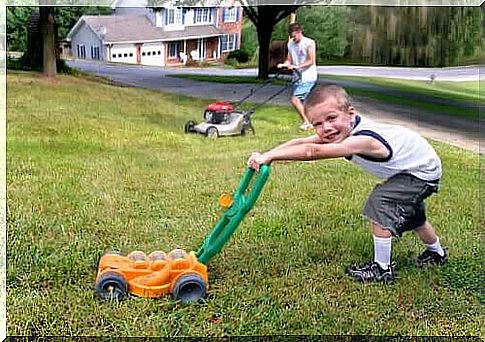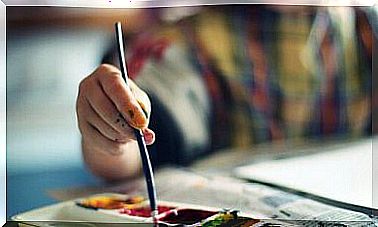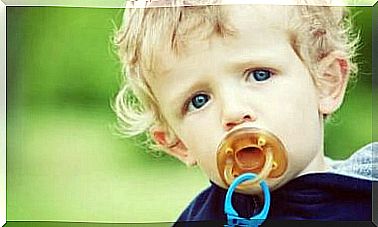Imitation Learning In Children – Being Parents

Imitation learning is the first and oldest model of learning for all species.
Both animals and humans learn the most essential things this way. This includes everything from how they feed themselves to how they communicate, which are actions they incorporate by simply mimicking and replicating whatever their parents do or the individuals who live with them.
However, imitation learning in children is so prevalent that children are not only learning essential aspects of life. They can also reproduce bad habits that will accompany them throughout their life.
It is therefore essential that as parents we are aware that learning by imitation is a constant process. This is why grown-ups must always be attentive to what they are planning.
Imitation learning in children
One of the most important things to consider when it comes to imitation learning is that it is driven by children’s innate curiosity. Many of the copied behaviors are not the result of conscious decisions.
Today, the universe of attributes related to human behavior and habits that children learn and reproduce is vast. The most important are those transmitted through speech, habits, emotional responses and social behavior.
Imitation-to-speech learning
Children undoubtedly learn to communicate by imitation. This claim is so real that speech therapists say that children not only reproduce the way parents speak, but also the tone of their voice.
As we noted earlier, parents should pay special attention to how they communicate with children.

There are many instances where children may or may not have started talking at an appropriate age due to lack of communication from parents, or because they were constantly talked to when they were babies.
However, speech-transmitted imitation learning in children is not just about the early years of development. It will also be present from the time they start to communicate until they reach adulthood.
Children can learn to speak quickly, slowly, in a high-pitched or deep tone of voice, with a strong accent related to geography, or to say swear words as a result of what they hear at home and at school .
Learning by imitating habits
The second type of learning that children often copy is related to habits. Hairdressing, eating at certain times of the day, washing, being on time, exercising, being organized and outgoing are qualities that you learn very simply. Obviously, this happens by simply imitating the actions of their parents at home.
Therefore, it reinforces what all parent guides say: it is not enough to ask the child to be ordained to be ordained. Indeed, the child must be able to observe this behavior at home daily in order to adopt the same.
Learning through emotional responses and social behavior
In many cases, abusive or depressed children simply recreate the environment in which they live. There are many children, for example, who suffer from anxiety resulting from an emotional reaction caused by their parents being nervous and constantly on alert. Thus, they convey to the child a constant feeling of danger.
To cite a concrete example: we can often see that the treatment given to children by their parents is the same as the treatment they then give to their dolls when they play imitating power figures inside the house.

On the one hand, some children yell at their dolls and punish or hit them, on the other hand, there are also those who talk to them in a loving and overprotective way.
When examining the mothers’ behavior, it was evident that the children had learned social behavior and associated it with emotional reactions based exclusively on imitation.
If, as parents, you set goals that you want children to learn about, it is essential to eliminate any negative behavior and determine what actions can set a bad example for children.
Remember that, almost like sponges, they will assimilate all the behaviors of the house and their environment and surroundings.









